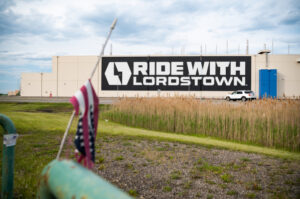
Have you ever had a customer visit your website repeatedly but never land the sale?
Do you sit up at night wondering where those leads go and how you could win them back?
Google’s remarketing lists for search ads (RLSAs) may be just what you’re looking for.
These engagement-driven remarketing ads allow you to target your ads to your highest-value prospects. That means you can show your ads directly to the customers who are most likely to do business with you.
What’s more, you can bid on keywords you don’t generally bid for to attract customers who have been on your website recently.
This opens your business up to a broader market of interested buyers you previously couldn’t connect with.
Let’s talk about how to get this done.
What Are Remarketing Lists For Search Ads?
RLSAs are a Google Ads feature allowing you to customize your search campaigns based on users who have previously visited your website.
For example, you can increase your ad bids for users who have visited your site in the last month. Or, you could bid on new keywords targeting users who converted in the past and recently revisited your website.
With remarketing lists for reach ads, you can set your bids, create ads, and tailor keywords based on what you know about your audience.
There are some restrictions to consider before creating your remarketing lists for search ads, though:
- RLSAs are available when users search through Google or Google partner sites.
- Your list needs a minimum of 1,000 cookies before you can use this feature.
- The membership limit for these lists is capped at 540 days.
Benefits of Using RLSAs
Google estimates only 2% to 4% of website visits result in purchases.
That means keeping your brand in customers’ minds after they leave your site is vital.
With remarketing lists for search ads, you have the opportunity to segment your audiences into lists based on their performance. This can help you better connect with potential customers who have already shown interest, which may lead to increased sales and improved ROI.
What’s more, customized content increases customer engagement. A survey by Adobe Spark found 67% of respondents expect customized content from brands.
From that pool, 47% said they are annoyed when a brand does not customize its content based on their needs, and 66% said they wouldn’t make a purchase because of this.
Remarketing lists for search ads offer personalization, engagement, and win-back potential, all within the tools you’re already using.
How Do You Make RLSA Campaigns?
To begin, you’ll need to tag your site for remarketing.
Use a Google Ads tag to set up your website or app audience source. This block of code will add each of your visitors to a remarketing list, which you can use later for targeting ads.
Once you tag your site, you’ll see a couple of automatically created remarketing lists. You can use these or make your own based on your needs.
You’ll also need to set up your initial campaign.
From there, you can begin setting up your remarketing lists for search ad campaigns.
RLSAs can be created in two ways:
- for bidding and targeting to ad groups
- for bidding and targeting to campaigns
You can’t apply remarketing lists to both levels for the same campaign simultaneously.
If you’ve already applied your remarketing lists to your ad groups but now want to use them for a campaign, remove them from the ad group and apply them to your larger campaign.
To apply remarketing lists to a Search ad or campaign, follow these steps.
- Create a new Search campaign or ad group, or select one you’ve already created.
- Click “Audiences” on the left side of your page.
- Add an audience list by clicking the pencil icon.
- Use the “Add to” section and select a “Campaign” or “Ad Group” depending on where you want to apply your list.
- Click “Select a campaign” or “Select an ad group,” then choose the option you want to target.
- Choose “Website visitors” in the “How they interacted with your business” drop-down menu.
- Check the box for each remarketing list you want to add.
- Click “Save.”
Next, you’ll need to confirm your targeting settings.
There are currently two targeting settings to choose from.
- Observation: observe the performance of your lists and doesn’t restrict the reach of your campaign or group.
- Targeting: only shows ads to members of your remarketing lists but restricts your reach.
Six Tips for Using Remarketing Lists for Search Ads
Now that you’ve got your remarketing lists for search ads set up, you need to start optimizing.
Creating strong RLSAs means tapping into your SEO basics and continuously improving your process.
When you do this effectively, you’ll be more likely to engage with interested users on an ongoing basis, opening up your business for more qualified conversions.
Segment Your Audiences
As you begin setting up remarketing lists for search ads, you will find consistencies between your website visitors’ behaviors.
Use this data to create detailed, segmented lists to categorize your customers and send them the right ads.
Here are some examples of segments you can create:
- cart abandoners
- past customers
- product page visitors
- all site visitors
- contact page visitors
- visited multiple times
The more detailed you are when segmenting your audiences, the easier it will be to push personalized ads that could end in conversions.
Tailor Your Copy For Returning Customers
According to Segment, 71% of consumers feel frustrated when their shopping experience isn’t personal. Similarly, Instapage found 74% of consumers feel frustrated when a website isn’t personalized.
To meet the needs of your consumers, you need to prioritize personalization.
The benefit of remarketing lists is you’ve already gathered a breadth of information on your targeted users. This means when you send out your ads, you can tailor your copy to meet their specific needs.
For example, a returning customer could be pushed ads based on products they have already shown interest in.
A user who has visited your site but never made a purchase may be incentivized to buy with a discount.
Tailoring your copy and offers could help you create better audience relationships and provide an opportunity for increased conversions.
Understanding your customer needs is at the core of a robust digital marketing strategy.
If you want to know more about tailoring your content or audience targeting, reach out to one of our consultants.
Use Demographic Targeting
The more granular you get with your targeting, the better.
Demographic targeting lets you pinpoint users based on age, location, gender, parental status, or household income. The more you know about your audience, the better you can tailor your content for conversions.
This type of targeting in remarketing lists for search ads can also help you create stronger audience personas for people who are already in your sales funnel.
For example, if you see your frequent users all come from one income bracket or fall in a specific age range, you can use this to personalize your ads further.
This process also allows you to customize your bids and place higher or lower bids for specific demographic groups.
Monitor and Grow Your Audience Size
Choosing the “Open” function when creating your remarketing lists for search ads allows your list to continue growing through Google Ads features.
An open list continues to add qualified leads and push relevant content to those users. In contrast, a closed list doesn’t grow but instead continuously pushes ads to users you manually added.
The benefit of an open list is it allows you to utilize Google’s AI capability to grow your audience automatically.
The downside is it won’t always be accurate. You still need to check up on your open lists to ensure you’re sending the right messages to the right people.
If you choose to grow your audience sizes manually, you’ll have the ability to double-check each content type before it goes out.
Whichever tactic you choose, it’s essential to monitor your campaigns to ensure engagement is kept high.
Research Your Keywords
It’s important to analyze each keyword that led a user to your site to properly understand what they’re looking for and how you can give it to them.
For example, a customer already familiar with your site may have searched for you by name. In this case, you can assume they have some insight into your business and skip the generic welcome campaign.
But, if a customer found your site by searching for a related product, you may want to highlight your best products or services to swing them over to your brand.
Diving into this process will also give you data on which keywords are working and which are not.
Having this information available to you will help you optimize your ranking systems across your business.
As always, in-depth keyword research is your golden ticket to improving SEO. Ubersuggest is a great tool that can guide you through this process.
Make Bid Adjustments Where Needed
Although most marketers have been taught to avoid broad bidding, RLSAs already target your more qualified users. So, be willing to bid on broad keywords targeting your most qualified visitors.
If you want to tinker with some broad keyword targeting, set up different campaigns or ad groups for the ones you want to try. This will allow you to test their weight and see if they improve your conversion rates.
As always, make bid adjustments where needed.
You may find your mobile customers are your most frequent browsers, so it would make sense to increase your bids there.
Likewise, if you want to target recent website visitors, you can increase your bids for anyone who has viewed your site in the last 30 days.
Conclusion
Remarketing lists for search ads are an effective way to target your most qualified leads and deliver timely, personalized, and relevant content that may help them convert faster.
The data you gather from your remarketing lists is incredibly powerful when segmenting your audiences and creating future personas.
In addition, remarketing lists can be used for a variety of ad groups and future campaigns.
The best marketing strategy combines the best tools with the best practices, so don’t take the backseat with these exciting features.
What other remarketing lists for search ads tactics have you found success with?
The post What Are Remarketing Lists for Search Ads (RLSA)? appeared first on Neil Patel.








![Read more about the article [Funding alert] Fintech platform Pine Labs announces $600M round led by Fidelity and BlackRock](https://blog.digitalsevaa.com/wp-content/uploads/2021/05/Image5d9v-1603192587814-300x150.jpg)
